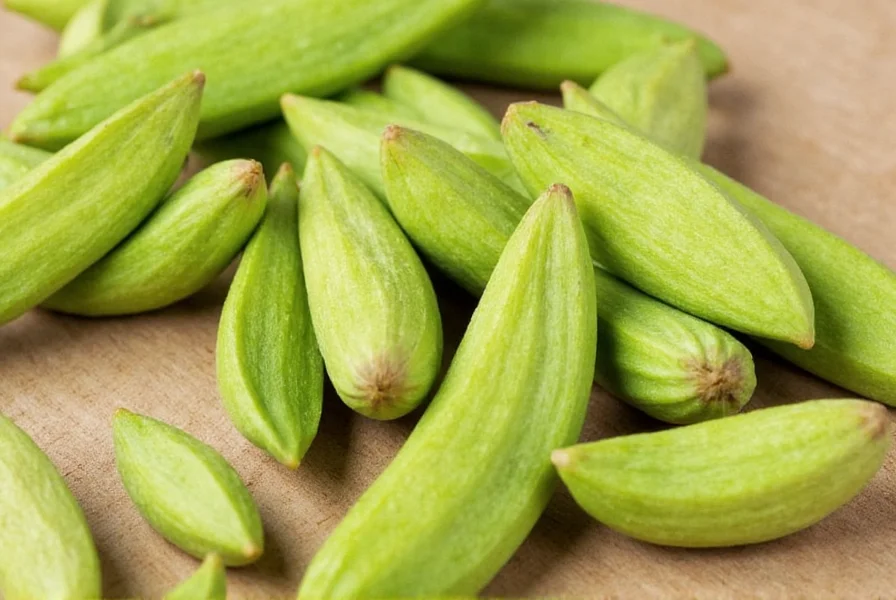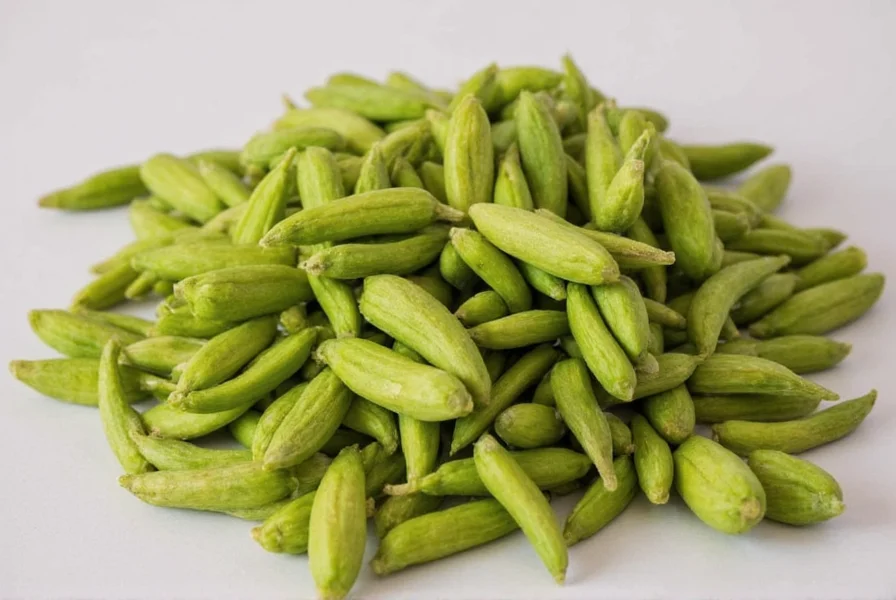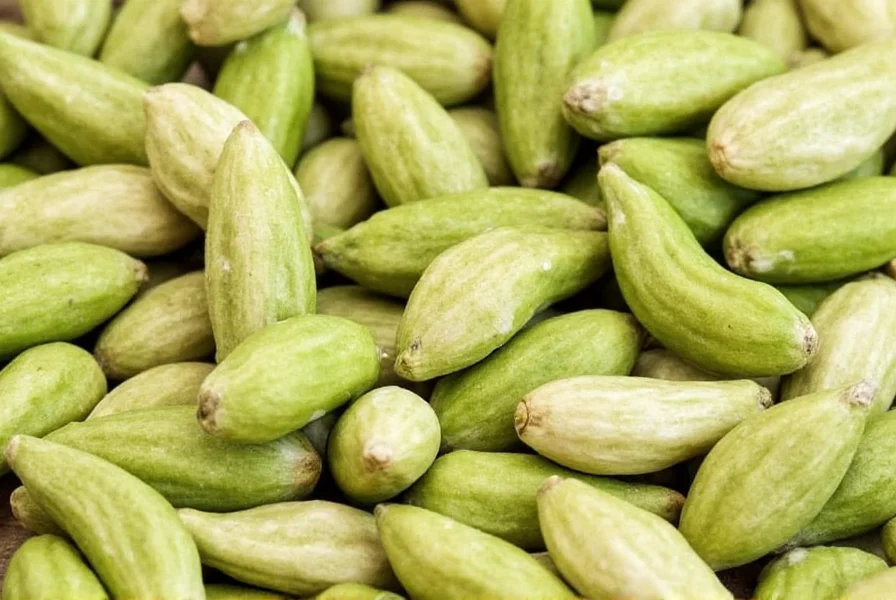These aromatic spice pods have been treasured for centuries across multiple culinary traditions. Green cardamom pods (Elettaria cardamomum) are the most common variety, while black cardamom (Amomum subulatum) offers a smokier profile. Understanding how to properly select, store, and use cardamom pods can transform your cooking with their complex flavor notes of citrus, mint, and floral undertones.
Green vs Black Cardamom Pods: Key Differences
| Characteristic | Green Cardamom | Black Cardamom |
|---|---|---|
| Botanical Name | Elettaria cardamomum | Amomum subulatum |
| Appearance | Small, light green triangular pods | Larger, dark brown/black pods |
| Flavor Profile | Citrusy, floral, slightly sweet | Smoky, camphorous, earthy |
| Primary Culinary Use | Sweet dishes, beverages, rice | Meat dishes, stews, robust curries |
| Processing Method | Air-dried | Smoke-dried over open flames |
How to Use Cardamom Pods in Cooking
When working with whole cardamom pods, proper preparation maximizes flavor extraction. For best results with green cardamom pods in baking, lightly crush the pods to release the seeds before adding to dough or batter. In savory dishes like biryanis or pilafs, add whole pods during cooking and remove before serving—similar to using a bay leaf.
For cardamom pod grinding techniques, remove seeds from pods first by gently cracking the pod and shaking out the tiny black seeds. Use a dedicated spice grinder for the freshest flavor, as pre-ground cardamom loses potency quickly. The seeds contain the primary flavor compounds, while the pod itself contributes subtle notes but can be bitter if overused.

Proper Storage Methods for Maximum Freshness
Preserving the volatile oils in cardamom pods requires careful storage. Keep whole pods in an airtight container away from light and heat. When stored properly in a cool, dark pantry, whole cardamom pods maintain peak flavor for 12-18 months, significantly longer than pre-ground versions.
For extended storage, consider freezing cardamom pods in a vacuum-sealed bag. This method preserves the essential oils that give cardamom its distinctive aroma. Never store cardamom near strong-smelling foods, as the pods readily absorb surrounding odors. The telltale sign of stale cardamom is diminished fragrance—fresh pods should release a strong, citrusy aroma when squeezed.
Cardamom Substitutes When Pods Are Unavailable
While nothing perfectly replicates the complex flavor of whole cardamom pods, several alternatives work in a pinch. For green cardamom substitution in baking, combine equal parts ground cinnamon and ground cloves with a pinch of ground nutmeg. In Scandinavian baking, some recipes successfully use allspice as a partial replacement.
For savory dishes requiring black cardamom's smoky notes, a combination of smoked paprika and a small amount of star anise can provide similar depth. Remember that ground cardamom works in a 1:1 ratio with seeds from pods, but you'll need to use approximately 25% less ground spice than whole pods since grinding concentrates the flavor.
Health Benefits Supported by Research
Cardamom pods contain bioactive compounds with potential health benefits. Studies indicate that cardamom pod antioxidant properties may help combat oxidative stress. The spice contains cineole, a compound with demonstrated anti-inflammatory effects in laboratory research.
Traditional medicine systems have long used cardamom for digestive support. Modern research suggests cardamom may help with oral health due to its antimicrobial properties. However, these potential benefits come from moderate culinary use—not therapeutic supplementation. As with any spice, consume cardamom as part of a balanced diet rather than relying on it for medical treatment.
Selecting Quality Cardamom Pods
When purchasing cardamom pods, look for plump, intact pods with a vibrant green color (for green cardamom). Avoid pods that appear dry, brittle, or have visible cracks. High-quality pods feel slightly heavy for their size, indicating they contain mature seeds. The most reliable indicator of freshness is aroma—gently squeeze a pod; it should release a strong, sweet, citrusy fragrance.
For those seeking where to buy authentic cardamom pods, specialty spice shops or reputable online retailers often provide better quality than standard grocery stores. Look for suppliers who specify the country of origin, as cardamom from Guatemala, India, and Sri Lanka typically offers superior quality. Avoid pods that have been sitting in clear containers exposed to light, as this degrades the essential oils.

Common Cardamom Pod Mistakes to Avoid
Many home cooks make critical errors when using cardamom pods. The most frequent mistake is overusing cardamom in recipes—its potent flavor can easily dominate other ingredients. Start with one pod per serving and adjust to taste. Another common error is using the entire pod including the tough outer shell in ground form, which creates unpleasant texture.
Never toast whole cardamom pods dry in a pan, as this burns the delicate essential oils. If a recipe calls for toasted cardamom, add the pods to hot oil or ghee instead. Additionally, don't substitute black cardamom for green in sweet applications—the smoky flavor will overwhelm delicate desserts.
Frequently Asked Questions
Can you eat cardamom pods whole?
No, the outer pod of cardamom is fibrous and unpleasant to chew. While not harmful, it's typically removed before serving. Only the small black seeds inside are meant for consumption. In some preparations like masala chai, whole pods are added during brewing and removed before drinking.
How many seeds are in one cardamom pod?
A single cardamom pod typically contains 15-20 tiny black seeds. The exact number varies based on pod size and maturity. When recipes call for 'seeds from one pod,' this generally equals about 1/8 teaspoon of ground cardamom.
What's the difference between cardamom pods and cardamom seeds?
Cardamom pods are the whole triangular husks that contain the seeds. The seeds are the small black particles inside the pods that deliver most of the flavor. Recipes specifying 'cardamom pods' typically mean to use the whole pod during cooking and remove it before serving, while 'cardamom seeds' indicates you should remove the seeds from the pods first.
Can I use ground cardamom instead of pods?
Yes, but with adjustments. One cardamom pod equals approximately 1/8 teaspoon of ground cardamom. However, whole pods provide more complex flavor as they release compounds slowly during cooking. For best results, grind seeds from fresh pods rather than using pre-ground spice, which loses potency quickly.
Why is my cardamom not fragrant?
Cardamom loses its volatile oils over time. If your pods aren't fragrant, they're likely stale. Fresh cardamom should release a strong citrusy aroma when squeezed. Properly stored whole pods last 12-18 months, while ground cardamom loses potency within 6 months. Always check aroma before using—this is the best indicator of freshness.











 浙公网安备
33010002000092号
浙公网安备
33010002000092号 浙B2-20120091-4
浙B2-20120091-4